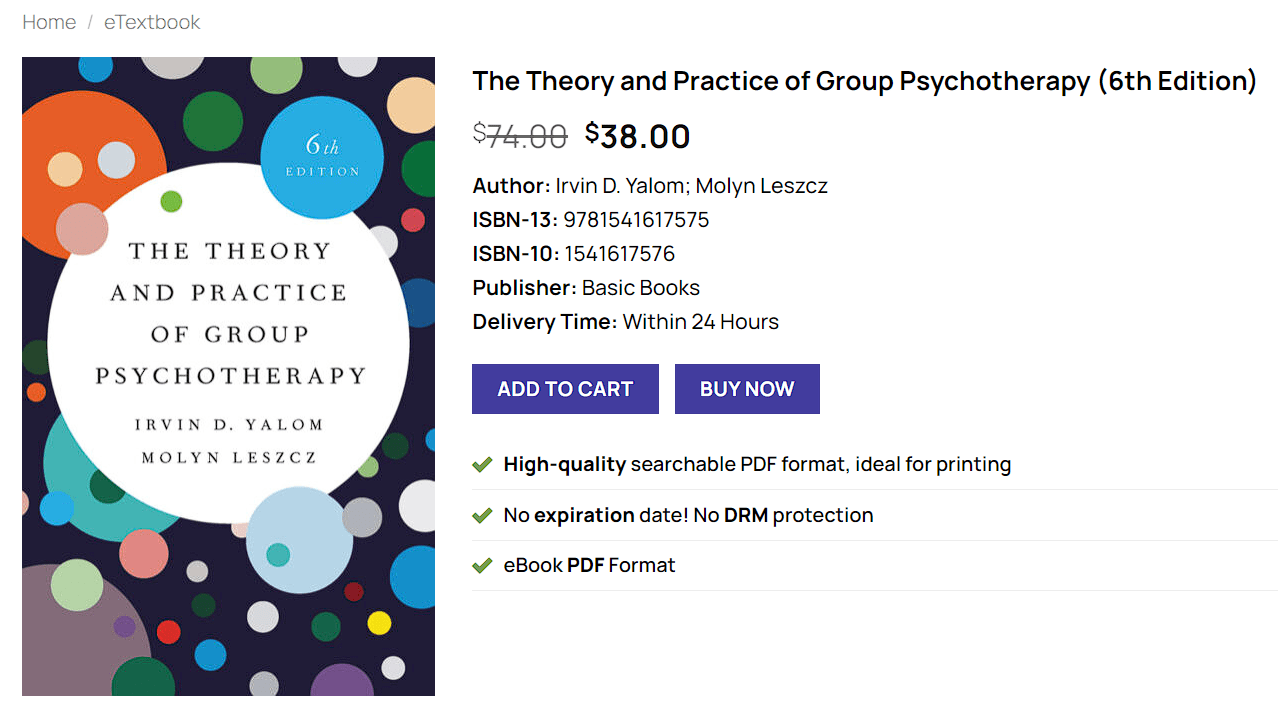The Theory and Practice of Group Psychotherapy 6th Edition rests on a foundation of fundamental theories and principles that shape its practice. Central to these are the therapeutic factors identified by Irvin Yalom, which include universality, altruism, and group cohesiveness. Universality refers to the profound relief that comes from the realization that one’s experiences are not unique, fostering a sense of belonging. Altruism is the opportunity for group members to offer support and help to one another, enhancing self-esteem and promoting a reciprocal sense of care. Group cohesiveness, perhaps one of the most critical factors, is the bonding that occurs within the group, creating a therapeutic alliance that is essential for effective therapy.
The stages of group development are another core concept integral to understanding group psychotherapy. These stages, often referred to as forming, storming, norming, and performing, delineate the evolution of group dynamics over time. In the forming stage, individuals come together and begin to establish relationships. The storming stage is characterized by conflict and power struggles as members assert their personalities and roles. This is followed by the norming stage, where the group begins to develop cohesion and establish norms of behavior. Finally, the performing stage is where the group functions optimally, with members working collaboratively towards therapeutic goals.
The role of the therapist in group psychotherapy is multifaceted and crucial for the group’s success. Therapists are responsible for facilitating group processes, which includes guiding discussions, managing conflicts, and ensuring that every member feels heard and valued. They also promote a safe and supportive environment, where members can express themselves freely and work through their issues. Effective therapists balance their interventions to support individual growth while fostering group cohesion, ensuring that the therapeutic factors can fully operate within the group’s dynamics.
Practical Applications and Techniques in Group Psychotherapy
Group psychotherapy presents a dynamic field that integrates a variety of practical applications and techniques to facilitate therapeutic change. The 6th edition of the reference text offers a comprehensive exploration of these methodologies, providing therapists with a robust toolkit for leading effective therapy groups.
An essential aspect of group psychotherapy is the careful selection and composition of group members. It is crucial to consider factors such as individual goals, compatibility, and the potential for positive group dynamics. A well-composed group can significantly enhance therapeutic outcomes, fostering a sense of shared experience and mutual support.
Setting clear goals and establishing group norms are foundational steps in creating a structured therapeutic environment. Goals should be collaboratively defined, ensuring they are specific, attainable, and relevant to the group’s needs. Establishing norms, such as confidentiality and respectful communication, helps create a safe and predictable space where members can engage openly.
The use of specific techniques, including role-playing, psychodrama, and cognitive-behavioral strategies, is integral to group psychotherapy. Role-playing allows members to explore different perspectives and practice new behaviors in a supportive setting. Psychodrama involves enacting scenes from one’s life, which can lead to profound insights and emotional release. Cognitive-behavioral strategies focus on identifying and modifying dysfunctional thoughts and behaviors, promoting healthier patterns of thinking and interaction.
Managing common challenges, such as disruptive behaviors and maintaining group cohesion, is vital for the success of group therapy. Strategies for addressing disruptive behaviors include setting firm boundaries, redirecting focus, and utilizing group pressure as a corrective tool. Ensuring group cohesion involves fostering a sense of belonging and commitment through regular check-ins and collaborative activities.
Real-world examples and case studies illustrate these concepts vividly, offering practical insights into their application across various therapeutic settings. For instance, a case study might demonstrate how a therapist effectively used role-playing to help a group member navigate social anxiety, highlighting the transformative potential of this technique.
Continuous training and supervision on The Theory and Practice of Group Psychotherapy 6th Edition are paramount for group therapists, ensuring they remain adept at employing these diverse techniques and addressing emerging challenges. Ongoing professional development promotes the refinement of skills, leading to more effective practice and sustained professional growth.

